 W
WThe Hungarian People's Republic was a one-party socialist republic from 20 August 1949 to 23 October 1989. It was governed by the Hungarian Socialist Workers' Party, which was under the influence of the Soviet Union. Pursuant to the 1944 Moscow Conference, Winston Churchill and Joseph Stalin had agreed that after the war Hungary was to be included in the Soviet sphere of influence. The HPR remained in existence until 1989, when opposition forces brought the end of communism in Hungary.
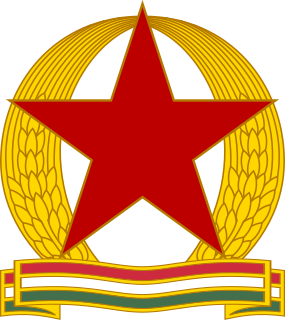 W
WThe State Protection Authority was the secret police of the People's Republic of Hungary from 1945 until 1956. It was conceived as an external appendage of the Soviet Union's secret police forces and gained an indigenous reputation for brutality during a series of purges beginning in 1948, intensifying in 1949 and ending in 1953. In 1953 Joseph Stalin died, and Imre Nagy was appointed Prime Minister of Hungary. Under Nagy's first government from 1953 to 1955, the ÁVH was gradually reined in.
 W
WThe Council for Mutual Economic Assistance was an economic organization from 1949 to 1991 under the leadership of the Soviet Union that comprised the countries of the Eastern Bloc along with a number of socialist states elsewhere in the world.
 W
WThe Communist rule in the People's Republic of Hungary came to an end in 1989 by a peaceful transition to a democratic regime. The Hungarian Revolution of 1956 suppressed by the soviet forces in 1957, Hungary remained a Communist country. As the Soviet Union weakened at the end of the 1980s the Eastern bloc disintegrated. The events in Hungary were part of the Revolutions of 1989, known in Hungarian as the Rendszerváltás.
 W
WThe F-4 Object is a formerly secret nuclear shelter under the downtown of Budapest. It is located 45-50 metres below the surface, several kilometres long approximately in a "H" shape between Kossuth tér and Szabadság tér. It has a direct connection to the Line 2 of the Budapest Metro and a closed tunnel to the Hungarian Parliament Building. According to other sources, the bunker has a connection with the former headquarters of the Hungarian Working People's Party, and there is no tunnel to the Parliament Building.
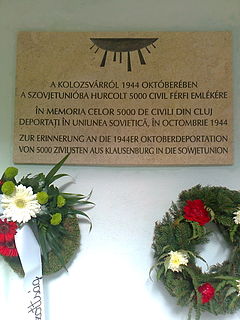 W
WThe topic of forced labor of Hungarians in the Soviet Union in the aftermath of World War II was not researched until the fall of Communism and the dissolution of the Soviet Union. While exact numbers are not known, it is estimated that up to 600,000 Hungarians were captured altogether, including an estimated 200,000 civilians. An estimated 200,000 citizens perished. It was part of a larger system of the usage of foreign forced labor in the Soviet Union.
 W
WErnő Gerő was a Hungarian Communist Party leader in the period after World War II and briefly in 1956 the most powerful man in Hungary as the second secretary of its ruling communist party.
 W
WHouse of Terror is a museum located at Andrássy út 60 in Budapest, Hungary. It contains exhibits related to the fascist and communist regimes in 20th-century Hungary and is also a memorial to the victims of these regimes, including those detained, interrogated, tortured or killed in the building.
 W
WThe Hungarian People's Army HPA was the military of the Hungarian Socialist Workers' Party and the Hungarian People's Republic from 1951 to 1990. It only saw combat once during its existence, which was assisting the Soviet Union in crushing the Prague Spring. It maintained close ties to the Warsaw Pact along with other Eastern Bloc countries. It dissolved in 1989 and retained its current form through the Hungarian Defence Force.
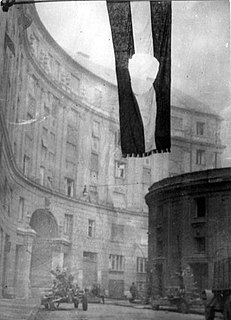 W
WThe Hungarian Revolution of 1956, or the Hungarian Uprising, was a nationwide revolution against the Hungarian People's Republic and its Soviet-imposed policies, lasting from 23 October until 10 November 1956. Leaderless at the beginning, it was the first major threat to Soviet control since the Red Army drove Nazi Germany from its territory at the End of World War II in Europe.
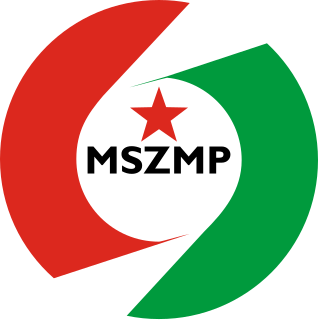 W
WThe Hungarian Socialist Workers' Party was the ruling Marxist–Leninist party of the Hungarian People's Republic between 1956 and 1989. It was organised from elements of the Hungarian Working People's Party during the Hungarian Revolution of 1956, with János Kádár as general secretary. The party also controlled its armed forces, the Hungarian People's Army.
 W
WThe Hungarian Working People's Party was the ruling party of Hungary from 1948 to 1956.
 W
WThe Hungarian Young Communist League was a communist youth movement in Hungary.
 W
WHungarian–Soviet relations were characterized by political, economic, and cultural interventions by the Soviet Union in internal Hungarian politics for 45 years, the length of the Cold War. Hungary became a member of the Warsaw Pact in 1955; since the end of World War II, Russian troops were stationed in the country, intervening at the time of the Hungarian Revolution of 1956. Starting in March 1990, the Soviet Army began leaving Hungary, with the last troops being withdrawn on June 19, 1991.
 W
WJános Kádár was a Hungarian communist leader and the General Secretary of the Hungarian Socialist Workers' Party, presiding over the country from 1956 until his retirement in 1988. His 32-year term as General Secretary covered most of the period the People's Republic of Hungary existed. Due to Kádár's age, declining health and declining political mastery, he retired as General Secretary of the party in 1988 and a younger generation consisting mostly of reformers took over.
 W
WMemento Park is an open-air museum in Budapest, Hungary, dedicated to monumental statues and sculpted plaques from Hungary's Communist period (1949–1989). There are statues of Lenin, Marx, and Engels, as well as several Hungarian Communist leaders. The park was designed by Hungarian architect Ákos Eleőd, who won the competition announced by the Budapest General Assembly in 1991. On public transport diagrams and other documents the park is usually shown as Memorial Park.
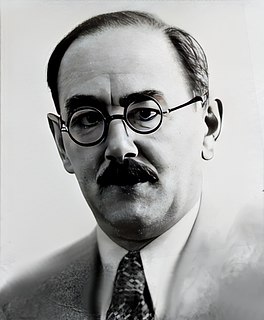 W
WImre Nagy was a Hungarian communist politician who served as Prime Minister and Chairman of the Council of Ministers of the Hungarian People's Republic from 1953 to 1955. In 1956 Nagy became leader of the Hungarian Revolution of 1956 against the Soviet-backed government, for which he was sentenced to death and executed two years later.
 W
WOTP Bank Group is one of the largest independent financial service providers in Central and Eastern Europe with full range of banking services for private individuals and corporate clients. OTP Group comprise large subsidiaries, granting services in the field of insurance, real estate, factoring, leasing and asset management, investment and pension funds. The bank is serving clients in 10 countries, namely Hungary, Bulgaria, Serbia, Romania, Croatia, Ukraine, Montenegro, Albania and Russia. In 2019, OTP Bank entered into an agreement to purchase MobiasBanca of Moldova. The agreement was finalized on 25 July, 2019.
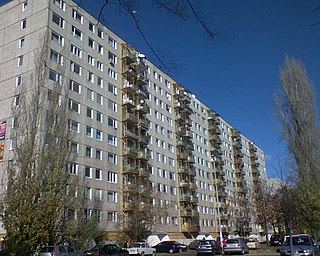 W
WPanelház is a Hungarian term for a type of concrete block of flats, built in the People's Republic of Hungary and other Eastern Bloc countries.
 W
WThe Patriotic People's Front was originally a Hungarian political resistance movement during World War II which become later an alliance of political parties in the Hungarian People's Republic. In the latter role, it was dominated by the Communist Party–known as the Hungarian Working People's Party (MDP) from 1948 to 1956 and the Hungarian Socialist Workers' Party (MSzMP) from 1956 onward.
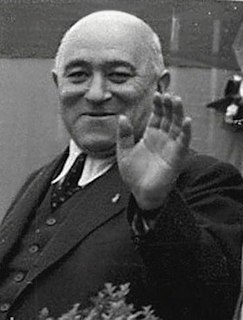 W
WMátyás Rákosi was a Hungarian communist politician who was the de facto leader of Hungary from 1947 to 1956. He served first as General Secretary of the Hungarian Communist Party (1945–48) and later holding the same post with the Hungarian Working People's Party (1948–56).
 W
WThe removal of Hungary's border fence with Austria occurred in 1989 during the collapse of communism in Hungary, which was part of a broad wave of revolutions in various communist countries of Central and Eastern Europe. The dismantling of the electric fence along Hungary's 240 kilometres (149 mi) long border with Austria was the first fissure in the "Iron Curtain" that had divided Europe for more than 40 years, since the end of World War II, and caused a chain reaction in East Germany that ultimately resulted in the demise of the Berlin Wall.
 W
WThe Transmitter Solt is a radio transmission facility for 540 kHz MW near Solt, Hungary, serving as the primary transmitter site for Kossuth Rádió. With an output power of 2000 kW, it is the most powerful radio transmitter in Europe and is among the most powerful radio transmitters in the world. Its intended broadcast area covers the Hungarian-speaking territories of Central- and Eastern Europe, however successful reception of the Kossuth Rádió was reported from as far as Michigan, United States and Kuala Lumpur, Malaysia. It uses a 303.6-metre tall guyed mast. The transmitter site has been a preserved industrial monument since 2013.